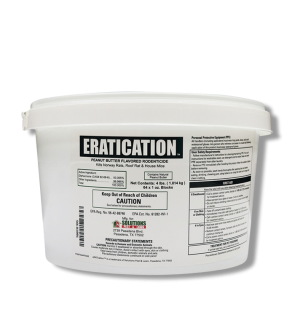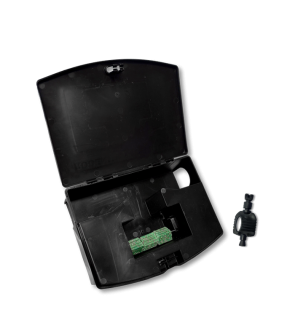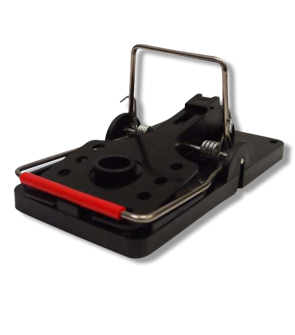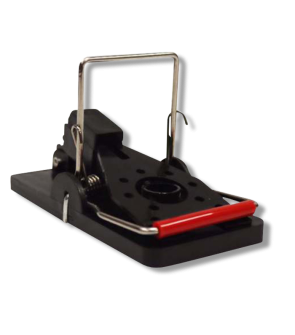Gain access to personalized product screening, the best pricing, rewards, and more!
Most Effective Products
How to Protect Your Car and Machinery From Rodents
This article is a general guide to removing rats and mice from your vehicle's engine and other machinery. By using the professional products and steps listed throughout this DIY guide, you will control rat and mouse infestations. Follow this guide and use the recommended products to remove these rodents and prevent future invasions within your car and machinery.
Whether in homes or in cars, a rodent is usually an unwelcome guest. This is because rats and mice are known for their ability to gnaw on electrical wiring or consistently burrow into multiple surfaces for suitable nesting places. These irritating creatures can and will present themselves inside your vehicle's engines or other machinery to create suitable nesting sites, especially during the fall and winter.
These persistent pests can find their way into your car and engine compartment through the smallest of openings and, once inside, cause severe damage to the wiring, upholstery, and insulation. Besides gnawing on essential components, these rodents create significant diseases through their waste. Once inside, the hazards of rodent waste can spread around your car through the air vents and air filtration systems.
Prevention is the best solution to keeping rats and mice from invading your vehicle's engines. Various methods are available, but this detailed DIY guide will provide you with recommended professional steps and products for avoiding and controlling rodent infestations inside your vehicle.
Signs of Rats and Mice in Car
Before inspecting the outside and inside of your car, tractor, and other machinery, make sure to wear the appropriate personal protective equipment (PPE) to avoid coming into contact with rodent waste and other sharp objects inside the engine.
These signs are common for both mice and rats infestations, continue with process of elimination or prevention if any signs of activity are noticed. For specific determination of rats or mice then, you will need to examine leftover fecal matter.
Droppings: Rats and mice leave significant amounts of their waste as they travel around and inside your vehicle. These pests create droppings in the engine, underneath car seats and pedals, along the dash, trunk, and other small openings.
Depending on the rodent species, these black or dark brown colored droppings will vary in size and shape. Droppings of rats are pellet-shaped like other mouse species but slightly larger. Norway rats droppings have blunt ends measuring 3/4 inches, and roof rats have pointed ends that are 1/2 inches long. House mice and deer mice droppings will measure a quarter of an inch long, similar to the shape and size of a grain of rice. The difference between these two pests is that house mice waste will resemble a grain of rice, whereas deer mice droppings will be more pointed at the end.
Nibble Marks: Rodents must constantly gnaw on multiple sources to sharpen their growing teeth and create nests with these chewed resources. These pests tend to gnaw on electrical wires, engine hoses, plastic panels in and around cars, upholstery covering the steering wheel and seats, ground carpet, and power steering lines.
Food and Plant Residue: It might not be as common a sign, but many car owners have noticed partial food and plants, such as pet food, grass blades, plant leaves, bird seeds, acorns, leftover french fries, bread, and other food resources, in random places throughout their car. These sources are prominent, meaning the rat or mouse carries materials to create nests and provide food to feast on in these sites.
Strange Sounds: These pests spend most of the day hiding away underneath the car hood, in car insulation, and sometimes inside your trunk. When driving or sitting in an unmoving vehicle, you may hear scratching, scuttling, or squeaks from inside your car or machinery.
Foul Odors: When mice or rats secrete fecal matter, they also create urine deposits. It is often difficult to determine where this foul, musty odor is coming from, but the most common places for rodents to urinate are across your car seats, dash, cup holders, cabin filters, and underneath your car hood. This is also evident for deceased rodents.
Rodent Themselves: You may often see rats or mice escaping from your vehicle throughout the fall and winter seasons, especially when the vehicle or engine of the machinery is turned on or being worked on. One rat or mouse indicates a more extensive rodent infestation in your car, home, and yard.
How to Keep Rodents Out of Car and Machinery
Once you have confirmed sites of rat and mouse activity, you can proceed with treatment. Remember to wear personal protective equipment (PPE) such as gloves when handling any rodent products since rats and mice depend on smell.
If your scent is left on the products being used, rats and mice will avoid the area, rendering the product ineffective.
When applying rodent products to cars, trucks, SUVs, lawn mowers, tractors, engines, motors, vehicle panels, tires, siding, and any other part of other types of machinery, ensure it is turned off.
Machinery and vehicles being used will need rodent products to be removed before activation.
Step 1: Clean Vehicle
When you regularly clean in and around your car, tractor, and other pieces of equipment, you help discourage rodents from creating nests.
Regularly clean the inside of your car to eliminate crumbs and smells of food for rodents. Make sure to vacuum and clean the dash, carpet, car seats, cup holders, and side of doors with soap and water to remove these food residues before they get a chance to build up. This step is crucial for homeowners who do not use the vehicle often.
Additionally, you will want to keep your clean vehicles, tractors, and so on away from sites used for food storage, such as dog or cat food, animal feed, and canned goods. If these food sources cannot be removed, store them in tightly sealed plastic containers.
Step 2: Maintain Lawns
If you keep your vehicle or other large pieces of machinery outside, make the surrounding area less appealing by mowing when the turf reaches a height of 3 inches and keeping bushes and other ornamental foliage trimmed.
In contrast, if vehicles and machinery are kept inside garages or workshops, block entry points by sealing cracks and crevices with caulk and copper mesh.
When fallen leaves surround your car, rodents are given the impression of a suitable environment with plenty of nesting materials.
Rake fallen leaves, sticks, and other plant material into piles away from cars, lawn mowers, and other machinery. Gather these leaves into sealed plastic trash bags, then properly dispose of them.
Step 3: Set Solutions Easy Set Mouse/Rat Trap
Set standard rodent snap traps baited with peanut butter in front and behind the vehicle seats, in the trunk, and on top of the tires. Placing the baited snap trap in these locations is best, as rodents are most likely to use these pathways to travel to and from the car.
We recommend using Solutions Easy Set Rat Trap or Solutions Easy Mouse Trap, depending on the rodent. This easy-to-use snap product is made of sturdy, durable plastic for rodent control inside or outside your vehicle. It also keeps your fingers away from the metal bar when disposing of deceased rodents. Check these traps daily to remove eliminated rats and mice.
The Solutions Easy Set Rat/Mouse Trap should be removed from the vehicle or machinery when used. Do not operate these machinery with traps inside.
Step 4: Place Loaded Bait Stations Outside
Regularly, leave out tamper-resistant bait stations such as Solutions Rat and Mouse Bait Station loaded with rodenticide baits like Eratication Rodent Bait. Both of these products should be used together, as Eratication Rodent Bait is immediately lethal to rats and mice once ingested. Solutions Rat and Mouse Bait Station effectively cover rodent bait blocks from outdoor weather elements, pets, and non-targeted wildlife from eating the Eratication Rodent Bait.
With a gloved hand, open the Solutions Rat and Mouse Bait Station with the included key. Place 4 to 6 Eratication Rodent Bait Blocks on the metal rods inside the bait station, then close.
Make sure to put the loaded Solutions Rat and Mouse Bait Station flat against the structure's wall closest to the vehicle or underneath the vehicle behind the tires. We recommend using at least two Solutions Rat and Mouse Bait Stations loaded with 6 Eratication Rodent Bait Blocks. Between each bait station used, there should be a distance of 20 to 40 feet.
Check the Solutions Rat and Mouse Bait Stations once a day to replace Eratication Rodent Bait Blocks or deceased rodents. Continue to replace the Eratication Rodent Bait Blocks until rat or mouse activity is no longer noticed.
Key Takeaways
Why Do Rats and Mice Invade Cars, Lawn Mowers, and Other Machinery?
- Rats and mice invade the inside of machines and cars due to the warmth the engine provides and protection from other weather elements, especially during the fall and winter seasons.
How to Get Rid of Rats and Mice in Car and Machinery
- First, clean the inside and outside of your vehicle and machinery to eliminate food crumbs, aromas, and other partially eaten food created by you or the rodent. Clean your yard through regular lawn maintenance such as mowing, trimming, and raking. Use Solutions Easy Set Rat/Mouse Trap when vehicles and machinery are not operating. Set out loaded Solutions Rat and Mouse Bait Stations near the car and machinery being used, preferably flat against a building surface or other pathways rodents use for travel.
How to Prevent Rat and Mice Infestation in Vehicles and Machinery
- Once rodents have been removed, store cars and other machinery inside garages or workshops. Seal all cracks and crevices around this structure with caulk and copper mesh. Move pet food, feed, and canned goods away from the storage area or place them into tightly sealed plastic containers to deter rodents. Continue to perform regular lawn maintenance and clean your vehicle weekly. You can also deter rodent infestations by regularly taking your car or other machinery out.
















